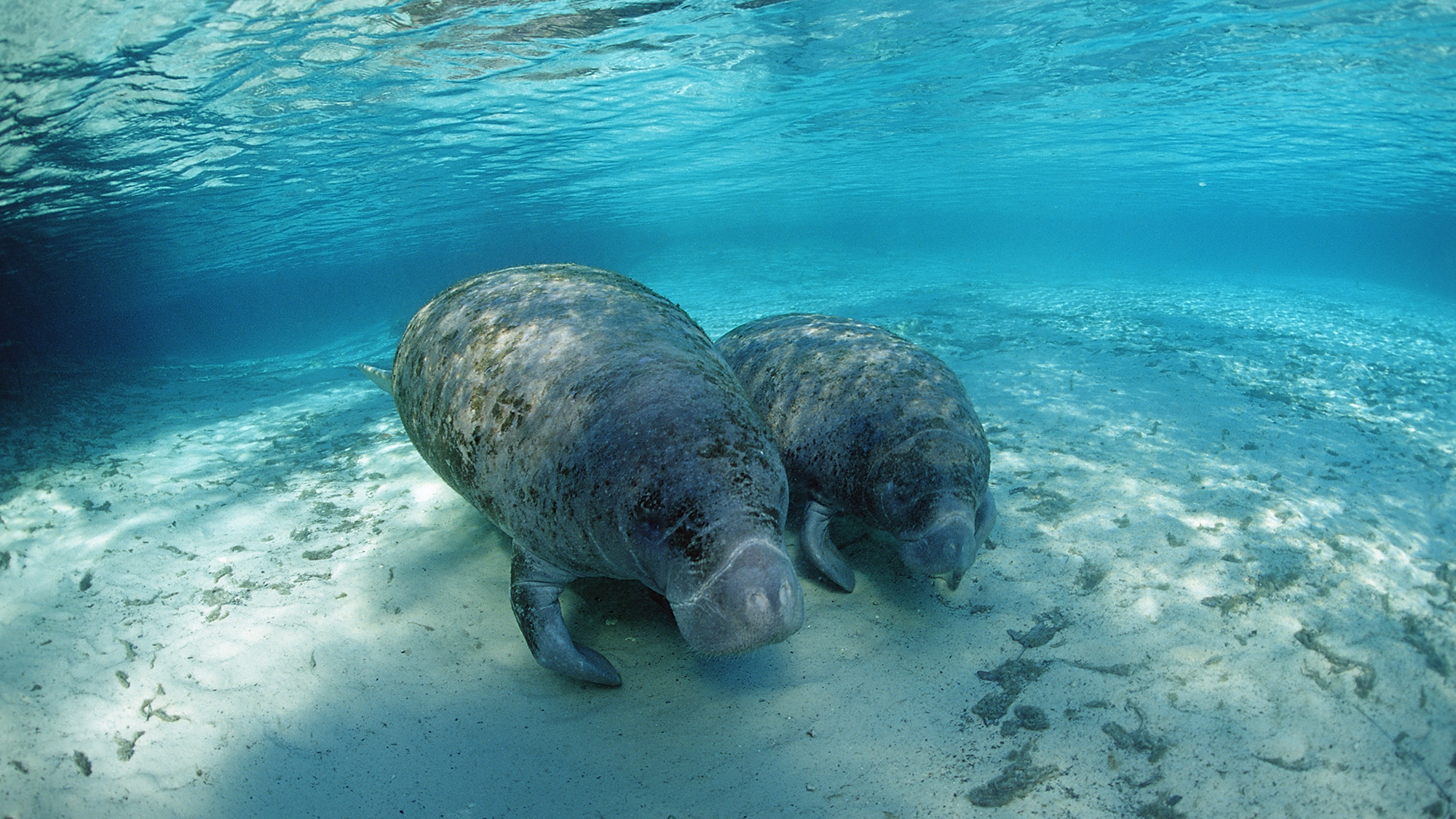

Florida’s manatees are as much a part of the state’s seascape as flamingoes, dolphins, reef fish, and smelly seaweed. However, these gentle “sea cows” might have arrived in the state fairly recently. Like the millions of tourists who visit the Sunshine State every year, manatees may have only occasionally visited Florida for short stints before returning home to Cuba and other parts of the Caribbean. The marine mammals potentially only became a fixture in Florida after European colonization and they may have initially flourished due to the same force that is threatening them today–a rapidly warming and transforming planet. The findings are detailed in a study published November 20 in the journal PLOS ONE.
Over the course of his career, study co-author and University of South Florida anthropologist Thomas Pluckhahn realized that there was a lack of evidence showing that there was a large population of manatees in the pre-colonial era. The manatee population in Tampa Bay wasn’t even deemed plentiful until the 1950s.
[Related: Wildlife officials are taking radical steps to save Florida’s starving manatees.]
“It is commonly assumed that Florida manatee populations were once larger than they are today,” Pluckhahn said in a statement. “Many will find the results surprising, not only because it contradicts this assumption but also because it indicates the complexity of changes that have taken place in the Anthropocene.”
The anthropocene is our current period during which human activity has the most influence on climate and the environment. Florida anthropologists and archeologists who dig into the anthropocene and ages past began to notice that manatee bones were a rarity at archeological sites in Florida. According to Pluckhahn, they haven’t even been found in Crystal River, the Manatee Capital of the World located in western Florida.

In the new study, the team reviewed roughly 70 archaeological reports with a systematic collection and analysis of almost two million animal bones. Almost none of the bones were from manatees. When they expanded the review to other excavations, they found about a dozen reports of manatee bones that had been fashioned into tools or ornaments. However, that is not enough evidence that the mammals had a large pre-colonial Florida population.
The team hypothesizes that it is possible that manatees were not swimming in precolonial Florida at all. The tools and ornaments made with manatee bones may have arrived here via Native Americans trading with those from the Caribbean.
“The problem with that is people have been looking for proof of contact between Florida and the Caribbean during the pre-colonial era for a long time and haven’t been able to nail it down,” Pluckhahn said.

Another hypothesis is that manatees were in abundance, but there are not many bones at excavation sites because they were not hunted like other animals. However, manatees do not appear in any of the expedition logs penned by explorers who landed in Tampa Bay in between 1528 and 1595.
According to Pluckhahn, the most logical hypothesis is that manatees were then later “present only in very low numbers in Florida as occasional visitors from the Caribbean and then settled here permanently.”
The first reliable written accounts of Florida manatees date back to the period of British rule in the late 1700s. Even then, the sightings appear to have been rare. In the 1920s and 1930s, local print media began to cover manatee sightings in Miami and St. Augustine. By the mid-1950s, there were reports that manatees were “becoming more plentiful” in Tampa Bay and a few were speculated to have become permanent residents of Crystal River.
The sudden change in manatee population likely occurred because Florida’s waters began to warm up. They were too frigid for manatees due the Little Ice Age. This period of intermittent cooling began during the 1200s and lasted through the 1800s.
The team suggests that as the effects of the Little Ice Age faded, manatees began to extend their range northward towards Florida. Warming waters due to human-caused climate change have subsequently convinced the manatees to stay put and breed. Accounts in newspapers from the late 1800s and early 1900s describe manatee sightings in warm water refuges including canals, harbors, yacht basins, and even areas near power plants.
[Related: Meet the extinct sea cow that cultivated Pacific kelp forests.]
According to the Florida Fish and Wildlife Conservation Commission, Florida’s manatee population is estimated to be between 8,350 and 11,730. They were reclassified from endangered to threatened under the federal Endangered Species Act in 2017, after their populations began to rebrand. However, human-caused climate change is still a threat to these gentle giants and they may be reclassified as endangered, after the population dropped seven percent between 2017 and 2019.
“Pollution is killing a lot of the sea grass that the manatees eat,” said Pluckhahn. “Plus, as we wean ourselves off fossil fuels and shut down power plants, we are taking away a refuge from them.”